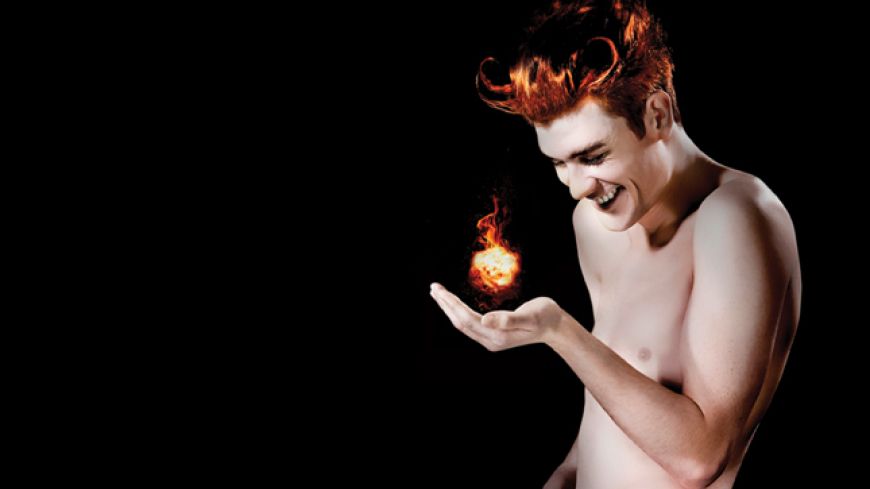
With the shadowy shape of the brick red. iron giant of the Forth Bridge centre stage, a lithe, elfish figure abseils quietly down the left side of the Proscenium Arch into the nursery of the three Darling children; Mother’s softly sung lullaby “Baloo Baleerie, gang awa peerie fairies” sends them to sleep, as a flickering flame suddenly flits and flies, crackles and cries above the stage. The magic begins….
I have always adored the story of Peter Pan, taken to several Christmas shows as a child, in which Peter was always played by a young woman as the Principal Boy. This pantomime cross-dressing convention continued until the RSC 1982 production cast a young actor in the leading role, reverting to its dramatic roots as a serious play for adults.
For this richly-imagined new version by David Greig, J.M Barrie’s Scottish childhood in Kirriemuir and the dark, psychological and mythical truths of his novel was the inspiration to relocate the swashbuckling adventure of pirates and mermaids to Victorian Edinburgh.
It's an apt and accurate setting: Barrie’s brother was killed in a skating accident, thereafter remembered by his mother as the “Boy who would not grow up.” At Dumfries Academy, Barrie befriended the Gordon boys with whom he played make-believe games in their enchanted garden:
"we crept up walls and down trees and became pirates in a sort of Odyssey that was long afterwards to become the play of Peter Pan,” he later recalled.
And so we follow Peter, Tink the fairy, Wendy, John and Michael to Neverland - (a programme map shows its location somewhere in the Kingdom of Fife) - the home of the Lost Boys. The towering Forth Bridge set neatly doubles as the masts and decking of a ship, secret islands and seashore rocks against a beautifully lit sky of grey clouds and pink sunsets. A medley of fiddle music, sea shanties and folk songs carries the action along as Peter and the boys fight high-flying bungee jump battles with Captain Hook and the pirates.
But that’s only half the story. At its romantic heart is the growing relationship between Peter and Wendy. Kevin Guthrie captures Peter’s double-sided personality with cheeky boyishness – he’s fearless, boastful and cocky, but still wants to hear the Cinderella fairytale at bedtime. As Wendy, Kirsty Mackay seamlessly matures from little girl to mother figure to the Lost Boys. While she embraces her budding emotions of teenage love, Peter is terrified of growing up: “Don’t touch me” he curtly responds when she tries to show him sweet affection.
There are scenes of well choreographed sword fights and Tinkerbelle’s flame is a clever illusion, but these moments are unfortunately few and far between in an otherwise slow paced, much edited narrative of the story. I personally missed the pure magic of Peter and the Darling children flying out the nursery window on "invisible" wires as Peter shouts, “Second star to the right and straight on till morning.” Where are Wendy and Peter's thimbles and buttons for kisses. ? Much of the beauty of Barrie's dialogue has been cut. Cal MacAninch’s devilish Captain Hook (with his fashionable tattoos and black kilt) tends to rely on a pantomimic villain method of acting. Thankfully the audience didn’t shout “He’s behind you.”
This ambitious production with an energetic ensemble of actors, singers and musicians is certainly a fresh, intelligent re-creation of a well loved favourite but too much of the original charm and fairytale storytelling has been lost. In highlighting Barrie’s underlying themes of the innocence of childhood, life and death, this Peter Pan is a show for adults and older children (about 12+).
Kings Theatre, Glasgow 23rd April - 8th May
Barbican, London, 12th - 29th May
Eden Court, Inverness, 1st - 5th June
Festival Theatre, Edinburgh, 8th - 12th June
His Majesty's, Aberdeen, 15th - 19th June

